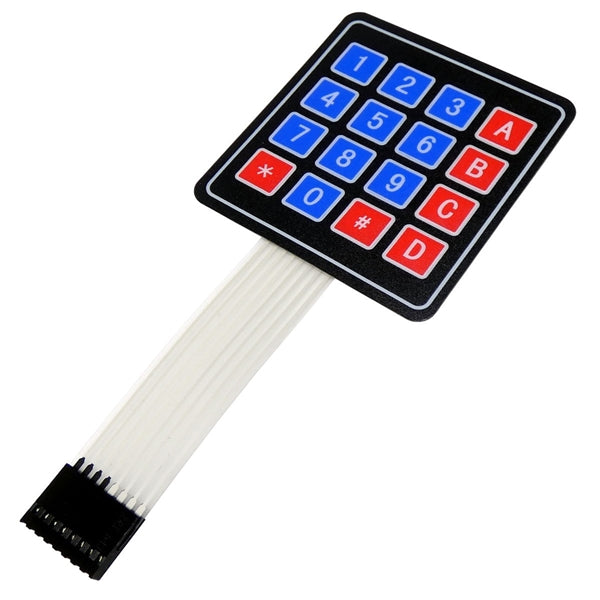Comprehending Membrane Switches: The Key to Reliable and sturdy Controls

What Are Membrane Layer Buttons?
Membrane switches are an advanced remedy in the realm of interface technology, incorporating performance and style effortlessly. These tools work as a user interface in between users and electronic systems, incorporating several components right into a compact style. Typically created from flexible, slim layers of materials, membrane layer switches are created to reply to touch, making it possible for users to interact with machinery and digital devices efficiently.
The main elements of a membrane layer switch include a published circuit layer, graphic overlay, and a spacer layer that avoids unintentional activation. The graphic overlay can be personalized to reflect brand identification or user choices, improving looks while ensuring usability. Membrane buttons are frequently utilized in numerous applications, consisting of clinical tools, consumer electronics, and industrial equipment, owing to their durability and resistance to ecological variables such as wetness and dirt.
One of the key advantages of membrane switches is their capability to stand up to damage, making them excellent for high-traffic settings. Furthermore, they are light-weight and call for minimal area, permitting cutting-edge styles in item development. In general, membrane layer switches stand for a practical and efficient option for contemporary digital user interfaces, marrying modern technology with user-centric design concepts.
How Membrane Switches Work
The operation of membrane changes depend upon a straightforward yet effective mechanism that translates individual input into digital signals. These switches are composed of several layers, commonly including a visuals overlay, a spacer layer, and a circuit layer. When a user presses the button, the top layer deforms, allowing a conductive component in the circuit layer to reach a matching conductive pad on the underside of the graphic overlay. This contact shuts the circuit and sends out an electronic signal to the device, showing that the switch has actually been triggered.
The design of membrane buttons can differ, however they often include domes or tactile elements to provide responses to the individual, improving the overall experience - membrane switch. The products utilized in membrane buttons, such as polyester or polycarbonate, add to their durability and resistance to ecological elements, consisting of wetness and dust. Moreover, the published circuits are typically encapsulated, go to website which protects them from wear and tear in time.
Benefits of Membrane Layer Buttons

In addition, membrane layer switches are understood for their sturdiness. Built from robust materials, they are resistant to dust, wetness, and physical wear, which significantly expands their lifespan compared to traditional mechanical switches. This longevity makes them particularly appropriate for high-traffic settings and applications needing long life.
An additional considerable benefit is the convenience of cleansing and upkeep. The smooth surface area of membrane layer changes reduces dust build-up and is often unsusceptible spills, making them suitable for setups that require regular sanitization.
Furthermore, membrane buttons provide a structured profile, bring about a thinner style that can be integrated right into different devices without including mass. This feature not only improves the aesthetic appeal yet additionally contributes to a much more ergonomic product design.
Applications of Membrane Buttons
Flexible and straightforward, membrane switches locate applications across a vast array of industries, consisting of medical tools, customer electronics, and commercial devices. In the clinical area, these buttons are integral to gadgets such as analysis tools, client surveillance systems, and infusion pumps, where integrity and simplicity of cleansing are important. Their capability to maintain and hold up against severe environments performance makes them excellent for such applications.

In consumer electronics, membrane layer switches are made use of in items like microwaves, washing equipments, and remote controls - membrane switch. Their sleek layout enables for user-friendly interface, boosting the total customer experience while providing resilience and resistance to damage
Commercial devices also gains from membrane layer buttons, particularly in control panels for machinery like this and automation systems. These buttons provide protection against dirt and wetness, guaranteeing constant performance in tough atmospheres. Moreover, their customizable features permit manufacturers to customize them to certain functional needs, improving effectiveness and performance.
Picking the Right Membrane Change
When picking a membrane layer button, it is necessary to think about numerous aspects that affect performance and suitability for specific applications. The main considerations include environmental problems, responsive comments, sturdiness, and style requirements.
First, analyze the operating setting; switches exposed to dampness, chemicals, or severe temperature levels require specific materials to guarantee durability and functionality. Next, review the need for tactile feedback. Relying on individual interaction, some applications may gain from a responsive action to verify activation, while others might choose a non-tactile layout for aesthetic factors.
Toughness is one more vital element; membrane buttons need to be developed to endure regular usage, effects, and abrasion. Ensure the picked switch can withstand the anticipated lifecycle, specifically in high-usage situations.

Conclusion
In verdict, membrane switches over offer as necessary components in the design of resilient and trustworthy control systems across various sectors. this link The convenience of membrane layer switches permits for tailored remedies that fulfill particular operational needs, enhancing their relevance in modern technology.
Membrane layer changes stand for a crucial element of modern-day user interface style, blending capability with durability in various applications.Membrane layer switches are an advanced solution in the realm of user interface technology, integrating capability and layout perfectly. Typically constructed from versatile, slim layers of materials, membrane buttons are made to respond to touch, enabling individuals to engage with machinery and digital tools properly.
The design of membrane layer switches can vary, however they commonly incorporate domes or responsive components to offer feedback to the individual, improving the overall experience.In verdict, membrane changes serve as necessary parts in the design of reliable and resilient control systems throughout numerous markets.